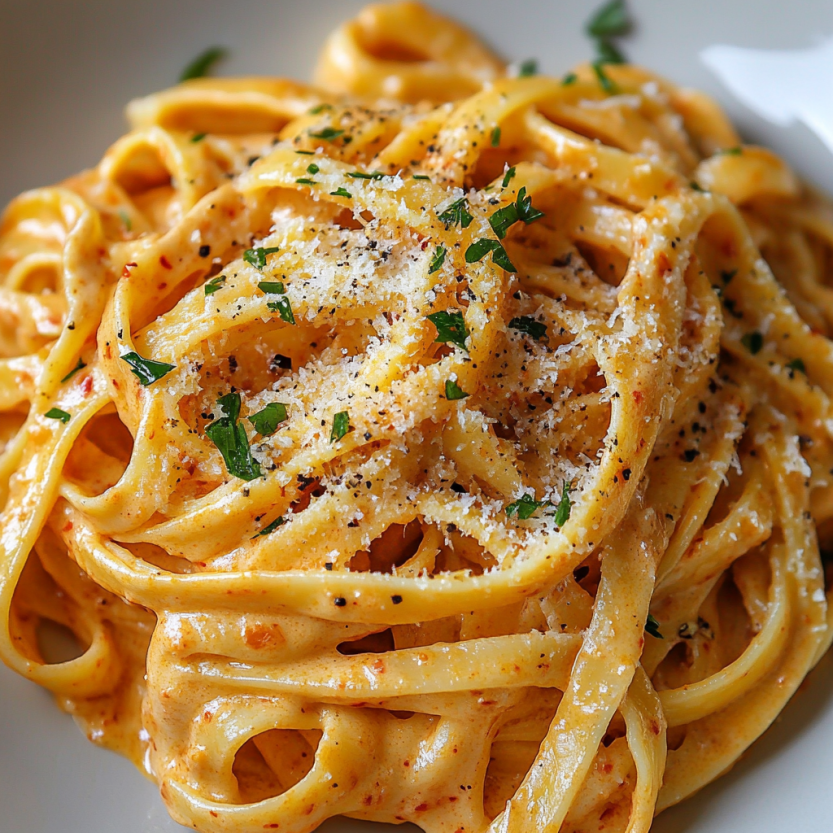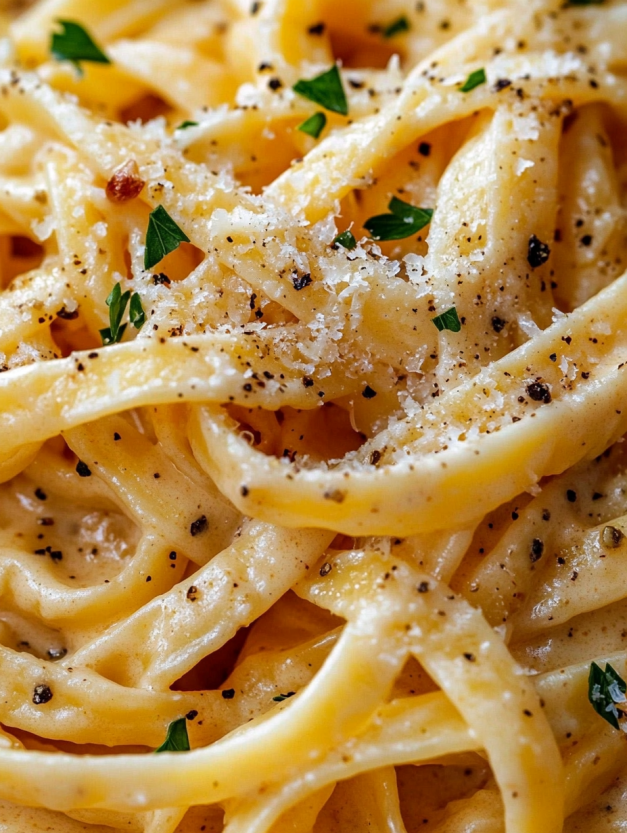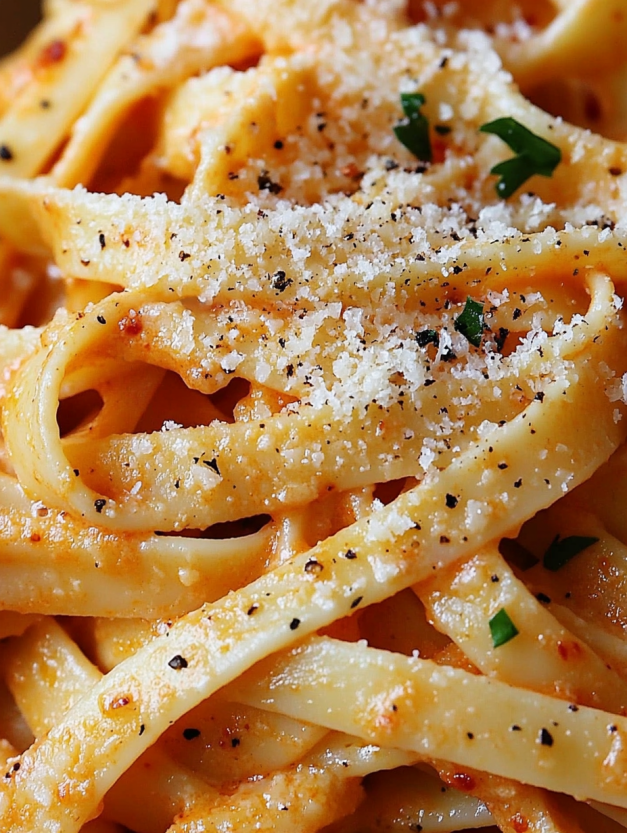 Bookmark
Bookmark
This creamy gochujang pasta brings together the bold heat of Korean chili paste with the rich comfort of Italian cream sauce for a fast and deeply satisfying dish. It is a go to recipe on nights when I want something indulgent but still quick to prepare. The way the sauce clings to every strand of pasta makes every bite rich and flavorful.
I first made this on a cold evening when I was craving something spicy and warm. It became a regular request at my dinner table almost immediately.
Ingredients
- Fettuccine or spaghetti: about eight ounces is best for grabbing the sauce and holding it well
- Gochujang: look for one with fermented soybeans for the best umami heat and depth
- Heavy cream: adds a smooth velvety body to balance the spice
- Parmesan cheese: freshly grated brings saltiness and helps thicken the sauce
- Garlic: minced to infuse the oil with rich base flavor
- Olive oil: essential for sautéing and blooming the gochujang
- Salt and black pepper: used to adjust balance and enhance overall flavor
- Fresh parsley: chopped for a fresh finish and visual contrast
Step-by-Step Instructions
- Sauté the Garlic:
- Warm olive oil in a large skillet over medium heat. Add the minced garlic and cook gently for thirty to sixty seconds just until fragrant. Avoid browning which can make the sauce bitter.
- Bloom the Gochujang:
- Stir the gochujang into the skillet and cook for about one minute. The paste will loosen and its deep aroma will develop as it melds with the oil and garlic.
- Cook the Pasta:
- Bring a large pot of salted water to a rolling boil. Add the pasta and cook just shy of al dente according to package directions. Reserve half a cup of the cooking water before draining.
- Make the Sauce:
- Lower the heat under the skillet and pour in the heavy cream. Stir steadily as the mixture simmers gently for two to three minutes. The sauce will thicken just enough to coat the noodles.
- Combine Pasta and Cheese:
- Add the cooked pasta directly to the skillet and toss until coated. Sprinkle in the Parmesan cheese and continue tossing until glossy and fully combined. Use reserved pasta water a bit at a time to adjust the texture.
- Season and Serve:
- Taste the pasta and season with salt and pepper as needed. Serve immediately garnished with chopped parsley and extra Parmesan if desired.
 Bookmark
Bookmark
My favorite part of this dish is the way gochujang transforms in the pan. It becomes richer deeper and slightly sweet which always surprises guests who are trying it for the first time.
Storage Tips
Leftovers can be stored in a sealed container in the fridge for up to three days. Reheat gently on the stove or in the microwave with a splash of cream or milk to revive the sauce. Avoid freezing since the cream may separate and affect the texture.
Ingredient Substitutions
Use coconut cream in place of dairy cream for a dairy free option. Replace Parmesan with a nutritional yeast based blend for a vegan version. If you want to reduce the spice try mixing in tomato paste with just a pinch of chili flakes instead of full gochujang.
 Bookmark
Bookmark
Serving Suggestions
This pasta pairs well with a simple arugula salad dressed in lemon juice or balsamic vinegar. Garlic bread is a natural match and perfect for scooping up extra sauce. For added freshness serve with sautéed greens like bok choy or spinach.
Cultural Notes
Gochujang is a traditional Korean condiment known for its fermentation and layered heat. Blending it into pasta bridges Korean and Italian culinary roots. This type of east meets west fusion has become popular in modern kitchens for good reason.
Frequently Asked Questions About Recipes
- → What is gochujang and why use it in pasta?
Gochujang is a Korean fermented chili paste that brings depth, umami, and gentle heat to dishes. It complements creamy sauces beautifully, making it ideal for pasta.
- → Can I make this dish dairy-free?
Yes, you can substitute heavy cream with coconut cream and use nutritional yeast instead of Parmesan for a dairy-free version.
- → What pasta works best with this sauce?
Fettuccine or spaghetti are ideal as their texture holds the creamy sauce well, ensuring every bite is flavorful.
- → How spicy is this dish?
It's mildly spicy. The cream balances the heat, but you can adjust the amount of gochujang or mix in tomato paste for a milder result.
- → Can I add vegetables or protein?
Absolutely. Add-ins like shrimp, mushrooms, spinach, or grilled chicken work well and make the dish even more satisfying.
- → How do I reheat leftovers?
Gently reheat on the stovetop or in the microwave with a splash of milk or cream to restore the sauce’s smooth texture.
